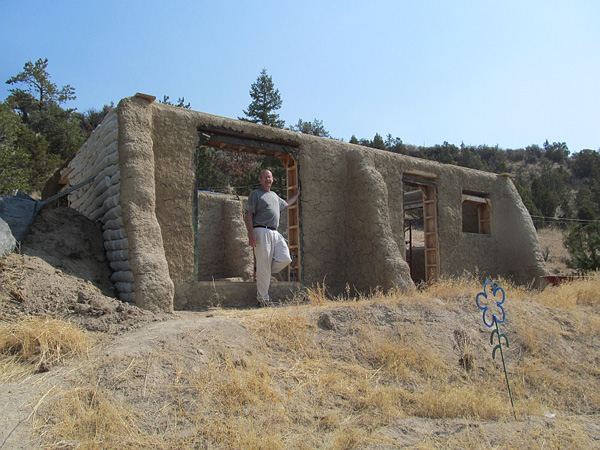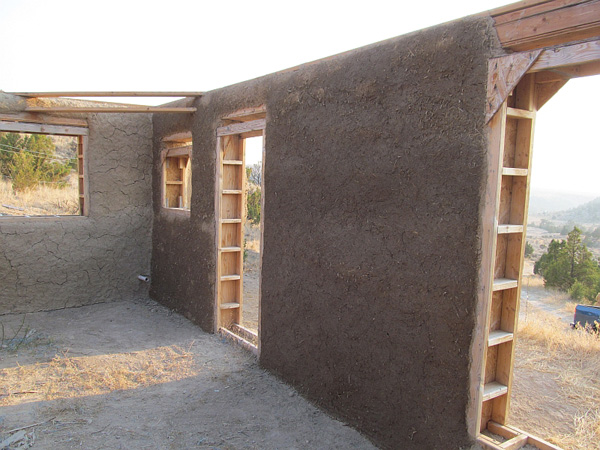
“Now that the walls are all covered with adobe, I can probably work on the roof this winter when we have decent weather. You can’t do adobe work if it’s too cold, but we typically have lots of nice enough days in the winter for working on a roof. The next posting will be when significant framing is done for the roof.”

“We mixed dirt, water, and straw in a portable cement mixer (powered by the generator) and made a nice sticky batch. We threw small handfuls on the walls, being careful to make sure rows and cracks were well filled in. It went surprisingly fast. That day Vaughn and I finished the entire exterior of the south (short) wall. Two weeks later an Amish family on tour with me spent one day working on the cabin (no photos of them!) and we finished the interior of the back (long) wall. The end of July Ruth, Bev, and Jacqui helped a couple days and we finished a couple more walls. Putting adobe on the walls goes much faster than building the walls, and it’s a lot more fun!”
Source: Building my Cabin!
Earthbag Homes – Easiest and Cheapest Green Build

Seeing exposed bags in pictures always make me cringe a little, I personally could not believe how fast the Poly bags begin to deteriorate in the sun. I love this Door and Window buck frame design too, potential for both insulation and shimming for a perfect fit plus very efficient… Nice! I can’t wait to see more progress pictures for this wonderful labor of love.
Yeah, the frames are clever. Easy to make with salvaged wood, fast, strong.
I think I read where their bags were exposed up to 2 years! Most bags will deteriorate in a few months. Be careful.
how big is you cabin and how many earthbags did you use? what kind of roof will you install?
(This is for Kent and other natural building bloggers.) Fellow bloggers: please add enough basic info on your site so reader’s can more easily replicate what you’ve done.
This is a good, simple design. But normally the roof goes on first so the plaster won’t get damaged.
Also, note the excellent bag work on Kent’s cabin. The earthbags are filled to capacity (which requires fewer bags), squarish, uniform and level. I say this because all too often we see slumping, uneven, skinny bags that look like bags of loose dirt. Bags of loose dirt are not the same as earthbags! Cut open a dried earthbag and it should be similar to rammed earth.